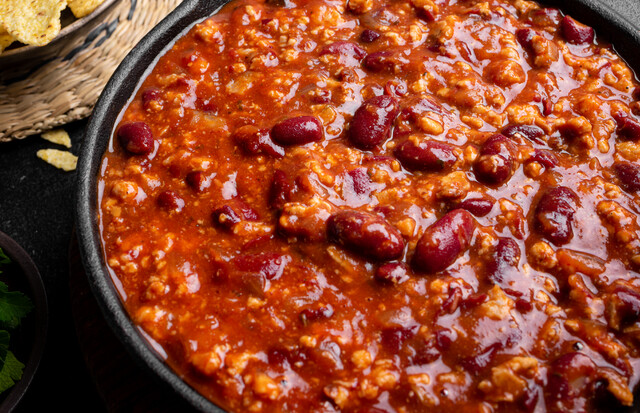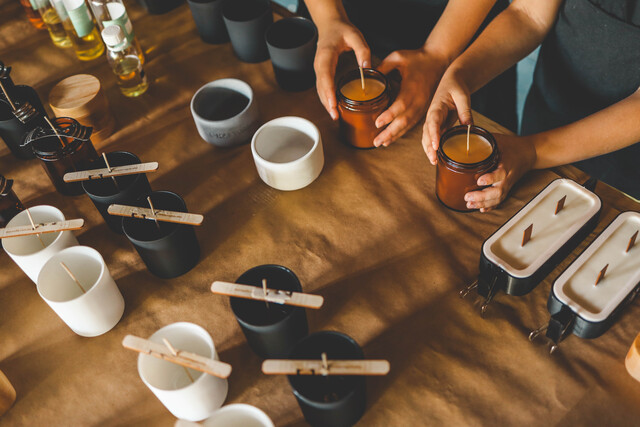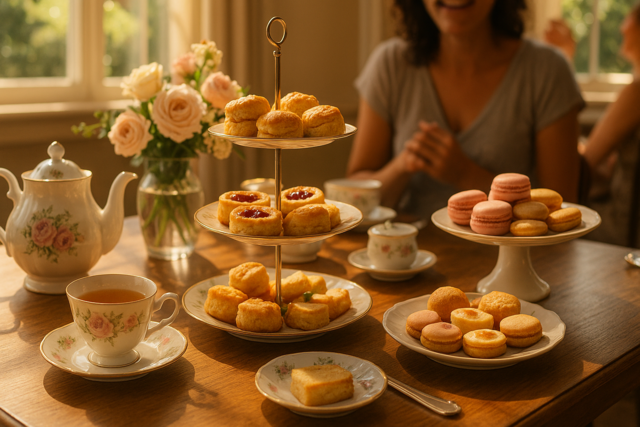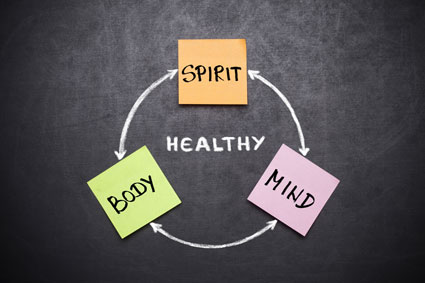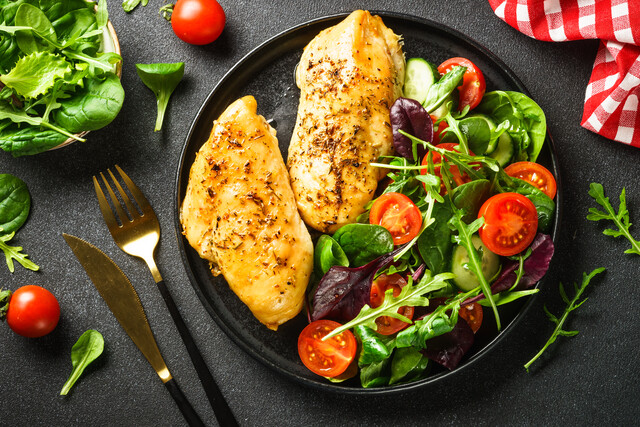Baking bread is most successfully completed with the freshest, highest quality ingredients available. The basis of most bread recipes is a mixture of flour, water, yeast, and salt. Everything else enhances the flavor and differentiates between one delectable loaf and another. When baking a loaf of bread, every ingredient is important. You must always be aware of the quality of each ingredient and how it will affect your recipe.
Objectives:
1. To learn the differences between flours for bread baking and how to select the best one for each recipe.
2. To learn about the different types of baker's yeast and how to determine yeast freshness.
3. To learn how to select the best ingredients for more complex recipes.
Flour:
Flour is the basis of bread. There are breads without yeast, sugar, and even salt, but there is not bread without flour. Flour is any milled cereal grain (or occasionally ground nut meal), but the most common flour used in bread baking is wheat flour. Wheat flour comes in many different varieties such as all-purpose flour, bread flour, and whole wheat flour.
Always use the type of flour that the recipe calls for. Every type of flour behaves differently when combined with different ingredients and under different circumstances. Do not pack the flour into the measuring cup. Spoon the flour into the cup and scrape the top with a butter knife or spatula to level the flour. If you use the cup as a scoop it will pack the flour causing you to use more flour than the recipe intended. Too much flour creates hard, dense cookies.
All-Purpose Flour:
All-purpose flour is a finely milled flour made from the internal part of the kernel which contains neither the bran nor the germ. It is a blend of high-gluten hard wheat and low-gluten soft wheat. All-purpose flour is the most common flour used in bread baking. It is easily manipulated and incorporated. It comes in two varieties: bleached ad unbleached. The choice to use one or the other is generally up to the personal preference of the baker as they tend to act the same in recipes. Flour can be bleached naturally over time or chemically.
Bread Flour:
Some recipes call for a special flour known as bread flour. Bread flour is over 99% hard-wheat flour with a small amount of malted barley flour and Vitamin C or potassium bromate.
Whole Wheat Flour:
Whole wheat flour contains the wheat germ which gives it a fuller flavor and a higher nutritional and fat content. Many delicious breads are made with whole wheat flour.
Yeast and Yeast Storage:
Baker's yeast is made up on many tiny living organisms that convert fermentable sugars in the dough into carbon dioxide and ethanol. It is a common leavening agent used in bread baking and causes the dough to rise and become more airy and less dense; therefore, it is crucial that yeast is fresh or it will not work. In other words, if the yeast has died it will no longer activate the sugars and cause the dough to rise. There are two types of yeast used for bread baking. These are dry yeast and cake yeast.
Dry Yeast:
Dry yeast generally has a "Best if Used By" date stamped on the package that is two years from the time it was originally packaged. Do not use yeast if this date has passed. Unopened dry yeast should be stored in in a cool, dark place but does not have to be refrigerated or frozen. After opening, dry yeast can last up to four months in a refrigerator or 6 months if frozen.
Cake Yeast:
Cake yeast is sold in moist blocks and is much more perishable than dry yeast. Cake yeast is also stamped with a "Best if Used by Date" and must be stored in a refrigerator that is set below 45* F. it should always tightly sealed and never frozen.
Sugar:
Again, like flour, use the sugar that is called for. Sugar helps to activate the yeast. When the yeast is added to warm water and mixed with sugar, it devours the sugars and converts them into ethanol and carbon dioxide which allows for the yeast to activate and rise. Honey can also be used to the same purpose in some recipes.
Eggs:
Always use fresh eggs. Look at the expiration date before each use. If the recipe calls for large eggs, do not use small eggs. The difference in size will disrupt the balance between dry ingredients and wet ingredients. Generally, it is a good idea to place the eggs that you will use in your recipe in a bowl on the counter an hour or two before use so they reach room temperature. Not as much air will be allowed into the mixture if you beat cold eggs.
Honey:
Honey acts as a yeast activator in the same way that sugar does. As with the other ingredients, always use the honey specified in the recipe. If no particular kind is specified, then there are many options to choose from. Some honeys, such as those gathered from bees feeding from particular wildflowers or fruits, will have a very strong flavor. These can either add or detract from the final flavor of a loaf of bread.
Butter:
Use unsalted or salted depending on the recipe instructions. If it does not specify, use unsalted butter, but do not remove any of the extra salt from the recipe. Never place your butter in the microwave as it will heat unevenly and will, most likely, melt more than desired. If you do not have an hour lead time to place butter on the counter, then cut it into small cubes or use a cheese grated to grate it into small pieces before allowing it to sit on the counter to warm. Most recipes will specify the texture and warmth of the butter desired.
Room Temperature Butter � This butter will leave a finger indentation when pressed. It is pliable but easily picked up and moved. Allow cold butter to sit out of the refrigerator for at least one hour to achieve this butter texture and temperature.
Softened Butter � This type of butter is softer than room temperature butter: more slick and greasy. You will still be able to move it with your hands.
Soft Butter �This type is too soft to move with your hands, but it will not be fully melted.
Melted Butter � Fully melted butter (in liquid state) is relatively rare for cookie baking. In order to achieve fully melted butter, it is fine to use the microwave or sauce pan.
Salt:
Never remove the salt from the recipe. The salt helps to bring out the other flavors in the recipe and works with the baking soda (in quick breads) for proper rise.
Conclusion:
If you can afford the organic, local variety then go with it. This is especially true with eggs, butter, and honey. Local and organic choices are generally fresher; therefore, they improve the overall flavor and texture of the bread. They are also less processed and tend to have fuller flavor and body.
Traditional Favorites
Traditional wheat-based breads are served at nearly every meal in the United States. They complement soups and salads, make up the backbone of sandwiches, and are used to soak up both sweet and savory sauces. The bread basket is a staple of most family meals even though the smell of fresh baked bread has left many kitchens in lieu of purchased, prepared breads. A great way to impress family and friends alike is to welcome them with a freshly baked loaf of bread whose smell fills the house and reminds them of times gone by.
Objectives:
1. Learn about the history of bread baking in the United States.
2. Learn a few traditional bread recipes.
History of Bread Baking:
Bread has been a staple food of many different cultures since the Agricultural Revolution over 10,000 years ago. Interestingly enough, bread and bread baking is a tradition of almost every culture worldwide. In the United States, many traditions are rooted in a Western European history and culture. The overwhelming majority of the first settlers in the Americas were Western Europeans. For this reason, the traditional favorites of American bread baking tend to be born of European roots.
European breads may be a large part of American bread baking tradition and culture today but that was not always the case. Before the arrival of the European settlers, Native Americans made unleavened breads of ground cornmeal and water. These recipes were passed on to the first colonizers and became a large part of their diet as well until people began to build brick ovens in the 1800s in order to bake European wheat breads.
By the mid-1800s sourdough starter was sold in bakeries across the young nation and Fleishmann's opened their yeast packaging company which made leavened breads much easier to come by. From then on, European leavened wheat breads dominated the United States bread market and culture.
Native American Cornbread:
Traditional Native American breads are generally made of cornmeal and salt with other added ingredients like berries or beans, to taste. These breads are kneaded and boiled in hot water rather than baked because most Native Americans did not use ovens for baking.
Mohawk Cornbread:
One variation of Native American Cornbread is Mohawk cornbread which predates the now popular Navajo fry bread.
Ingredients:
2 lbs cornmeal (Native Americans would have used freshly ground corn, but store bought varieties can work well for a modern baker).
2 (16oz) cans of red kidney beans
Salt to taste
Large pot or pan of boiling water
Steps:
1. Mix cornmeal, about a tablespoon of salt, and beans (undrained).
2. Add water as needed.
3. Knead on a floured (cornmeal) surface until the dough becomes stiff.
4. Flatten into small cakes (6 inches in diameter and 2 inches thick).
5. Slip into boiling water and boil covered until the cakes rise (about 1 hour).
6. Slice and serve with butter.
Optional:
Serve with squash as the Native Americas would have done in order to experience a full traditional Mohawk meal.
You may also fry the bread in oil or butter after boiling and serve with maple syrup for a sweet variation.
Cast Iron Cornbread:
Cornbread, as most people know it today, marks the blend of the old and new world traditions. It is a chemically leavened bread variety that many times incorporates both corn and wheat flours.
Following recipe makes one (9 in round) skillet of cornbread�
Ingredients:
1 � cups of cornmeal, coarsely ground
� cups of all-purpose flour
� cup of granulated white sugar
1 teaspoon salt
2 teaspoons of baking soda
1/3 cup of whole milk
1 cup of buttermilk
2 eggs, lightly beaten
8 tablespoons of butter, melted
Steps:
1. Preheat your oven to 425�F and place a 9in cast iron skillet inside the oven (on the middle rack) to heat while you mix your batter.
2. In a large mixing bowl, whisk flour, cornmeal, salt, sugar, and baking soda.
3. In medium-sized mixing bowl, whisk together milk, buttermilk, and eggs until well incorporated.
4. Add melted butter to the wet mixture but reserve 1 tablespoon to grease the skillet later on.
5. Add the wet ingredients to the dry ingredients and mix until well incorporated.
6. Carefully remove the cast iron skillet from the oven and reduce oven temperature to 375�F.
7. Coat the bottom of the skillet with the remaining tablespoon of butter and pour the batter into the skillet.
8. Immediately transfer skillet back to the middle of the oven.
9. Bake until the center is firm, or about 20-25 minutes (test by inserting a toothpick: it is done if the toothpick comes out clean).
10. Allow to cool for 10-15 minutes before serving.
Optional:
Drop a few tabs of butter on you hot cornbread and allow them to melt on top of the bread for added flavor.
This is the most common type of bread consumed in the United States. White bread is has many variations, but its basis is a simple loaf baked in a bread pan and sliced to serve.
Following recipe makes 2 (9in x 5in) bread loaves�
Ingredients:
2 (1/4 oz) packages of active dry yeast
3 tablespoons of granulated white sugar
2 � cups of warm water (110-115�F)
3 tablespoons of lard, softened (you may substitute for equal amounts of butter if preferred)
1 tablespoon of salt
6 � cups of bread flour
Steps:
1. In a large mixing bowl, mix yeast, sugar, and warm water. Wait until the yeast and sugar dissolve.
2. Stir in lard, salt, and 2 cups of flour until well incorporated.
3. Stir in the remaining flour � a cup at a time. Mix well with each flour addition.
4. When the dough is pulled together, turn out onto a floured surface and begin to knead. If using an electric mixer with dough hooks, place your dough into mixer and turn on.
5. Knead for 8 to 10 minutes.
6. Place the toughly kneaded dough (see section 2) into a lightly oiled, large bowl. Turn the dough to coat with oil.
7. Cover with a damp cloth and allow to rise until the dough doubles in volume (about an hour).
8. Turn the dough out onto a lightly floured surface and divided into two even loaves (preferably using a bench scraper).
9. Form into two separate loaves and place in two lightly oiled bread pans (9in x 5in).
10. Cover the loaves with damp cloths and allow them to rise until doubled in size (about 40 minutes)
11. Preheat your oven to 425�F
12. Bake at 375�F for about 30 minutes and the top is golden brown. The loaf should also sound hollow when tapped.
Optional:
Slice and serve with softened butter and honey for a traditional, sweet treat.
Conclusion:
Bread is a staple of many different peoples and cultures around the world. Recipes vary in ingredients and technique but the outcome is the same: a hearty compliment to any meal, and sometimes a meal in itself. In the United States, Native American cornbread has changed from an unleavened, boiled bread to the leavened variation common today. The most common bread still served today is the simple white bread which comes from Western European ancestors. If you ever want to impress your guests, welcome them with a home full of the smell of freshly baked bread.







